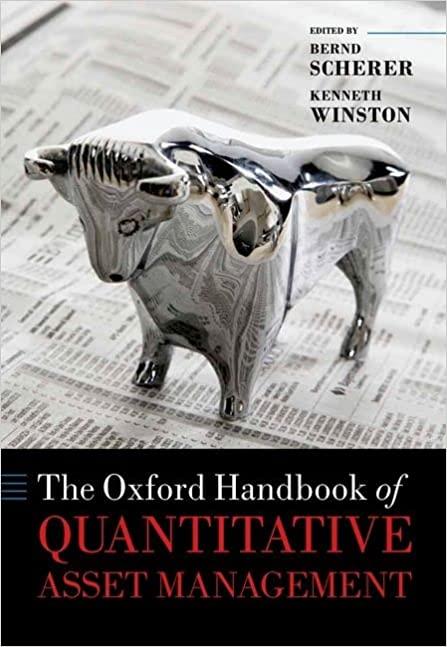faidnd the future value (IV) , of is the process of paing fomm foday's values to futhte amounts. The f V equation is: Whir, PY " present vake; 1 interest rate per yeaf, and N = number. of penods. You can use calculators and soresdsheets so find future vakes. A graph of the any sum qows over tirne at vanous nterest rates. The oreater the biterest rate, the the growth rate. Findeg thit present value (ov) is called discounting. and it is simely the reverse of were on hand today, would arow to equal the oven fuwise armcunt. The try equation is: Present valse =PV=tHHsFN F graph of the diecounting piticess shows how the present value of any wim to be recerved in the futuin secreases and aboroaches Vuse decliness fastint at interest rates. The fundamental poal of Anancial management is to maxmize the firei) valie, and the valie of any asset is the valie of ark enseveliod letsre eask Hown. 2. 2: Time Value of Money: payments are kno -Select- Infinite Single Annuity Here, PV= present value; I= in any sum grows over time at va Finding the present value (PV) is were on hand today, would gro A graph of the discounting proce S. A graph of the process shows how w due N years in amount which, if it as the years to receipt increases, and the present s of going from today's values to future amounts. The FV FVN=PV(1+I)N nber of periods. You can use calculators and spreadsheets the interest rate, the the growth rate. ply the reverse of In general, the present unt. The PV equation Presentvalue=PV=(1+I)NFVN e of any sum to be received in the future decreases and appro hental goal of financial management is to maximize the firm's FVN=PV(1+I)N of periods. You can use calculators and spreadsl interest rate, the the growth rate. the reverse of: In general, the p The PV equatic e=PV=(1+I)NFVN f any sum to be recerved in the future decreases an ial goal of financial management is to maximize the esent value of a cash flow due N years in \begin{tabular}{l|ll} and approaches & as the years to \\ ay to solve for th value, ar & 1 & les is with a financ \\ 1 & \end{tabular} amount at the end of 5 years to use for a dov he nearest cent. turn. You would like to have $12,100 in 6 years hand today, would grow to equal the given fut h of the discounting process shows how the prest declines faster at interest rates. The cash flows. can solve for eithe it rate or the number ntitative Problem 1: You deposit \$1,700 into an a you be able to withdraw at the end of 5 years? Do n as the years to receipt increases, and the present lue of any asset is the riables is with a financial years to use for a dowr future of its expected present a new car. How much faidnd the future value (IV) , of is the process of paing fomm foday's values to futhte amounts. The f V equation is: Whir, PY " present vake; 1 interest rate per yeaf, and N = number. of penods. You can use calculators and soresdsheets so find future vakes. A graph of the any sum qows over tirne at vanous nterest rates. The oreater the biterest rate, the the growth rate. Findeg thit present value (ov) is called discounting. and it is simely the reverse of were on hand today, would arow to equal the oven fuwise armcunt. The try equation is: Present valse =PV=tHHsFN F graph of the diecounting piticess shows how the present value of any wim to be recerved in the futuin secreases and aboroaches Vuse decliness fastint at interest rates. The fundamental poal of Anancial management is to maxmize the firei) valie, and the valie of any asset is the valie of ark enseveliod letsre eask Hown. 2. 2: Time Value of Money: payments are kno -Select- Infinite Single Annuity Here, PV= present value; I= in any sum grows over time at va Finding the present value (PV) is were on hand today, would gro A graph of the discounting proce S. A graph of the process shows how w due N years in amount which, if it as the years to receipt increases, and the present s of going from today's values to future amounts. The FV FVN=PV(1+I)N nber of periods. You can use calculators and spreadsheets the interest rate, the the growth rate. ply the reverse of In general, the present unt. The PV equation Presentvalue=PV=(1+I)NFVN e of any sum to be received in the future decreases and appro hental goal of financial management is to maximize the firm's FVN=PV(1+I)N of periods. You can use calculators and spreadsl interest rate, the the growth rate. the reverse of: In general, the p The PV equatic e=PV=(1+I)NFVN f any sum to be recerved in the future decreases an ial goal of financial management is to maximize the esent value of a cash flow due N years in \begin{tabular}{l|ll} and approaches & as the years to \\ ay to solve for th value, ar & 1 & les is with a financ \\ 1 & \end{tabular} amount at the end of 5 years to use for a dov he nearest cent. turn. You would like to have $12,100 in 6 years hand today, would grow to equal the given fut h of the discounting process shows how the prest declines faster at interest rates. The cash flows. can solve for eithe it rate or the number ntitative Problem 1: You deposit \$1,700 into an a you be able to withdraw at the end of 5 years? Do n as the years to receipt increases, and the present lue of any asset is the riables is with a financial years to use for a dowr future of its expected present a new car. How much















